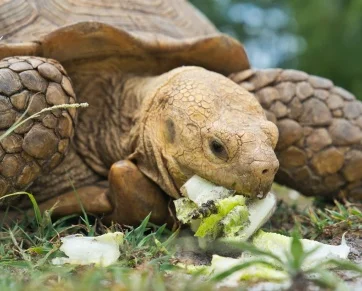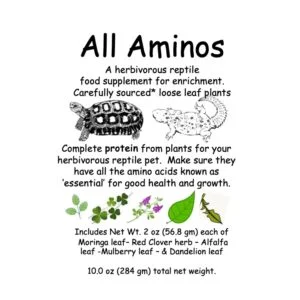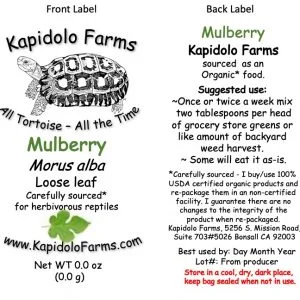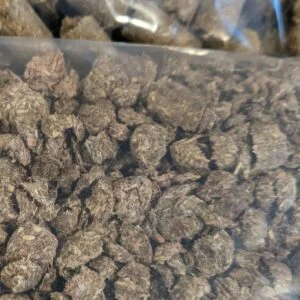I read this article, cited here, many years ago, and have used it as a resource for what I feed leopard tortoises. I’ve recently been reading many posts on forums and social media from people lamenting that they can’t get their leopard tortoise, babies at that, to eat grass. Well, it’s okay if they don’t as very small tortoises, please read my earlier blog regarding fiber for some insight on that. Adults might readily eat grasses, but given a choice, it’s number 2. Broadleaf greens are good for all species. The list is long. Please don’t think you are failing as a tortoise keeper if they don’t eat grass in abundance. Some grass is great for the long fiber, but nutritionally they are not missing out from what is also in broadleaf foods.
https://journals.co.za/content/wild/23/3/EJC116933 is the paper from which this blog is focused on. You can see the paper in its entirety here…
https://www.carecentre.org.za/ on this page, in the upper right corner is an up/down arrow seeking that you make a choice of the sub-pages, choose ‘Diet in the wild – a study’, and when time allows take a look around at the other tabs, it’s a great resource.
In short, an amazing number of observations were made of two species of tortoise and what they ate. The first year of observations was on a low rainfall year that followed many earlier low rainfall years. The second year of observation, made following the first year, was after abundant rainfall. The two species were leopard tortoises and Kalahari tent tortoises. I am only going to discuss the diet shift in leopard tortoises associated with the two observation years.
A real quick look at the numbers – the first study year, after a prolong series of low rain fall years, leopard tortoises had as a percent of plants available to eat, roughly 53% grasses, and 47% non-grass plants. Of this, their diet consisted of about 70% grasses. This makes it look like they are grass eaters to a great extent, but let’s look at more of the information presented in the study.
On the high rainfall year, when 57% of the primary productivity is grass (slightly more of the total stuff available to eat) their diet choice for grass dropped to 38% by choice. When there are more grasses, and more non-grasses available they eat more non-grass plants.
Often when plants are stressed they produce more secondary compounds (chemicals that are slightly to lethally toxic), grass or non-grass alike. A couple of things could be going on here influencing why the leopard tortoises are choosing to eat one plant type over another.
Leopard tortoises may be better adapted to secondary compounds in grasses than non-grasses, so they consume more in drought years when these chemicals are more abundant due to stress. Maybe they just tolerate grasses in total, better than other competing herbivores, most of which have a better reach up in the plant ‘canopy’ for fresh growth.
Grasses tend to be well adapted to drought conditions while still producing some green foliage closer to the ground. Non-grass plants have a different cycle of ‘not producing’ much foliage or seeds in drought years. Non-grass plants either drop their leaves (deciduous) or hold there old leaves (evergreen) and not produce a bounty of fresh leaves in drought years. Those that are produced would be on growing tips, higher from the ground. In our home gardens we can provide water so that every year is a bountiful year, and non-grass broadleaf food sources are readily available. Grass is not always a first choice, but rather a good choice when overall plant productivity is low. When overall plant productivity is high, gasses are the second choice.
Broadleaf weedy plants near the ground, if annuals, will simply not germinate or flourish in drought years. If they are perennials, near the ground, they will be sought and consumed quickly in years of lower productivity, if well above the ground, then out of reach of a tortoise.
Many non-grass plants on the lists are some kind of succulent. Many of these grow well when protected by woody lower branches of shrubs so as to survive from all manner of animals that might try to eat them. They ‘hide’ under the shrub, at the edge of where light can reach. Or well protected between rocks, such that they are very difficult to access for consumption.
Grassland describes a habitat type, not a diet preference. Please don’t think you are doing something wrong or a dis-service to your tortoise if they are not greedily consuming mostly grass in their diet. A well watered lawn with dandelions, plantain, and some clover, among other broad leaf ‘weeds’ is a good base diet. Border areas with chicory, and hibiscus, some sedums (a type of succulent, not all are good food, but most are), and other shrubs can be a great year round total diet. But if your tortoise is not eating the grass that’s okay.





